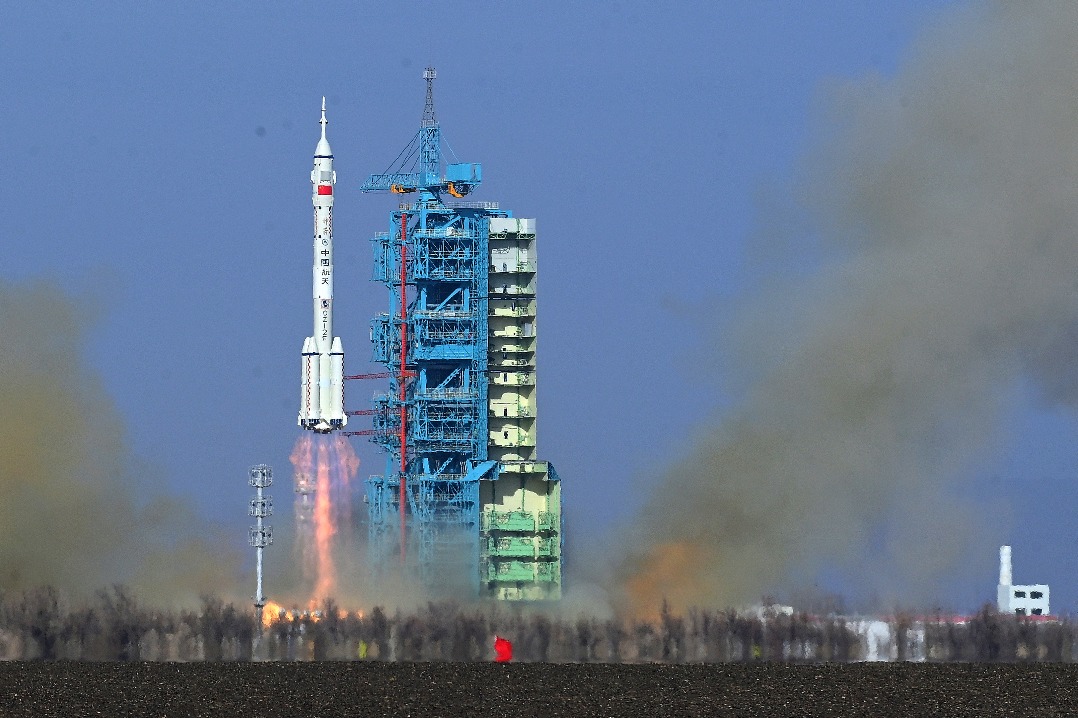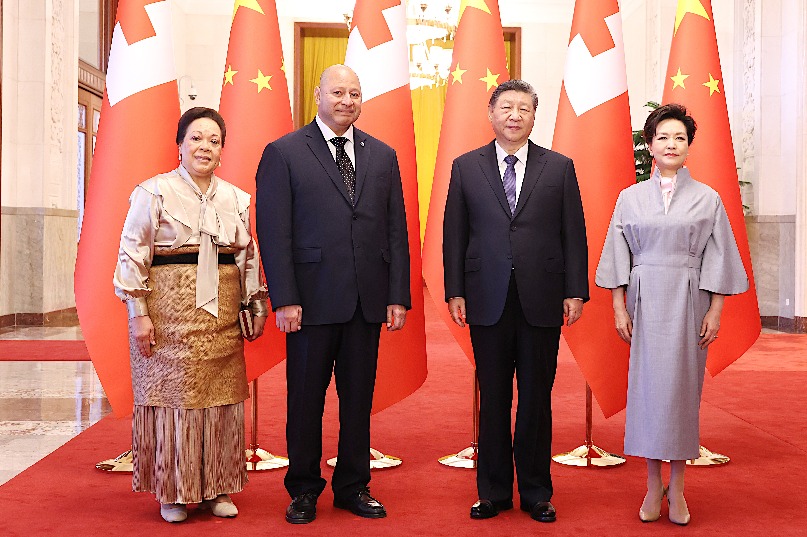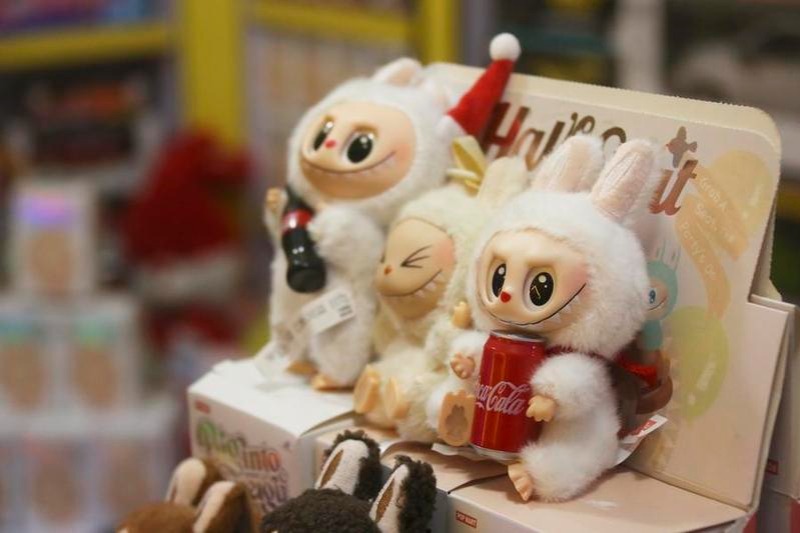New day for prehistoric commodity

Still unregulated, sale of mammoth tusks gains ground as its value is recognized
A wooly mammoth hides underneath the world's longest outdoor escalator, amid the flashing lights, art galleries and cocktail bars of Hollywood Road in Hong Kong's Central district.
But the shaggy-haired mammoth with curling tusks is only an illustration. A promotional banner shows the prehistoric creature outside a small shop, Star Company, which sells mammoth ivory products.
| With the ban on elephant ivory, carving craftsmen now do their work in other mediums, including mammoth ivory. Photos Provided to China Daily |
Japanese-style netsuke, or miniature sculptures, fill the storefront display, enticing curious pedestrians into the upstairs showroom. Carvings occupy every corner of the store. There are scrimshawed netsuke, beaded jewelry and tusks chiseled with Chinese themes. There are also hippo teeth, walrus tusks and stone carvings packed into wall-to-wall display cases. But the vast majority of merchandise comprises mammoth.
At least 12 distributors sell mammoth ivory products in Hong Kong, according to the Hong Kong Trade Development Council website. Roughly half a dozen retail vendors sell mammoth ivory products among western Hollywood Road's antique shops.
Star Company is a family business: William Lau owns the shop, and his sister often helps with daily operations. They also own a carving factory in Guangdong province. Their father started their company in 1964 as a jade carving outfit, and gradually they began working with ivory.
But in 1989, the Convention on International Trade in Endangered Species effectively banned the international trade of elephant ivory. Star Company's stockpile of elephant ivory shrank and operations downsized, so they transitioned into mammoth ivory in the mid-1990s.
Another person to spearhead Chinese trade in mammoth ivory is Hong Kong businessman Daniel Chan. The Fuzhou native moved to Hong Kong and worked his way up from accountant to factory boss by 1972.
Chan operates Lise Carving & Jewellery, which has carving operations in Hong Kong and the Chinese mainland.
"I began buying mammoth tusks from suppliers in Alaska and Canada in 1983. That was a very busy time for (elephant) ivory," says Chan. "In 1983, nobody wanted to use the prehistoric material; only me. I bought and kept it."
After the fall of the Soviet Union, mammoth ivory from Siberia - where carcasses of the extinct animal have been found in recent years - became more easily available.

Most of the world's undiscovered mammoth remnants are buried in the Russian permafrost. Indigenous tusk hunters, reindeer herders and speculators harvest the tusks in the summer when the ground thaws, and Russian dealers aggregate the tusks. Then, tusks must pass inspections in Moscow to confirm specimens are not important scientific or cultural relics.
Mammoth ivory as a commodity has struggled to gain traction over the popularity of elephant ivory across China, though the perception is changing.
A department store near Beijing's Forbidden City offers mammoth ivory products. The state-owned retail chain Chinese Arts & Crafts, which has outlets across the mainland and Hong Kong, announced in mid-March that it had suspended all sales of elephant ivory but would continue selling mammoth ivory.
Most of China's mammoth carving takes place in the Pearl River Delta region but there are also carving factories in Fuzhou on China's east coast, Harbin in Heilongjiang province in the northeast and Chifeng in the Inner Mongolia autonomous region.
"Mammoth ivory is a very good resource for maintaining traditional ivory carving techniques, but for the current Chinese buyers, mammoth ivory is still very new to them," says Chen Shu, president of the China Association of Mammoth Ivory Art Research.
The association's 200 member vendors and manufacturers voluntarily created a system of cataloging mammoth ivory items similar to the government-mandated identification cards for elephant ivory products. The mammoth ivory cards allow buyers to confirm mammoth products' authenticity.
Cataloged items in Chen's showroom range from the tiny (imitation postage stamps carved on a surface less than 1 millimeter thick) to the massive (complete and polished raw mammoth tusks that corkscrew from floor to ceiling).
"The purpose of this organization is to help Chinese society recognize the value of mammoth ivory," says Chen, noting that the raw price of mammoth ivory is much higher than that of elephant ivory.
Although mammoth tusks are sometimes found in excellent condition, they are also often broken and damaged due to geological conditions and exposure to the elements. Importers often have to buy bulk shipments that include a mix of good and poor-quality mammoth ivory. Much of the lesser-grade ivory goes to waste, increasing overheads.
"The exact price of mammoth ivory is difficult to tell because of varying quality," Chen says. "In 2010, a colleague told a journalist that the raw price of mammoth ivory is around 20,000 yuan ($3,250) per kilo, but I don't think that's very accurate."
To give an idea of the rise in value of mammoth ivory, Chen explains that raw elephant ivory sold for roughly 1,000-2,000 yuan per kg a decade ago, while raw mammoth tusks sold for hundreds of yuan for the same weight.
After 10 years, Chen estimates raw elephant ivory might sell at 8,000-12,000 yuan per kg, while mammoth ivory's price has increased at a much higher rate. "Now the price of raw mammoth ivory is around 30,000-40,000 yuan per raw kg, and I think the price is still going up," he says.
Chen says that Russian mammoth ivory exports to China have gradually declined since 2006 - a peak year with 30-40 tons imported. He suspects the cross-border trade in recent years to have been closer to 20 tons. Many experts have estimated that only 10-15 years worth of mammoth ivory remains underground.
When Chinese border control agents catch smugglers trying to import mammoth ivory without proper paperwork, law enforcement officials send the specimens to scientists for verification.
Mammoth tusks in excellent condition can closely resemble elephant ivory, especially when the prehistoric tusks' rough outer layer has been removed. One of the best methods for confirming the identity of a tusk is by measuring the angle of lines (known as Schreger lines) found at the outer layer of a clean cross-section on the base end of the tusk. Mammoth ivory has Schreger lines with an angle less than 90 degrees. Elephant ivory's Schreger lines cross at a wider angle, greater than 115 degrees.
Chinese border agents at Manzhouli in Inner Mongolia and Heihe in Heilongjiang send seizures to the College of Wildlife Resources at Northeast Forestry University in Harbin to confirm whether tusks are mammoth or elephant.
Jin Yu is a professor at the university who works with the team that identifies the ivory.
The government does not regulate mammoth ivory, she says, although she explains that problems arise when importers try to avoid customs declarations. At the retail level, mammoth and elephant ivory products must also be separated in vendors' display cases.
"Smuggling black-market elephant ivory as mammoth ivory is a possibility," Jin says. "In order to avoid this situation, we must teach the public how to distinguish between mammoth and elephant ivory."
(China Daily Africa Weekly 08/29/2014 page25)
Today's Top News
- Xi, King Tupou VI attend signing ceremony of cooperation documents
- Xi meets Tonga's king
- Xi sends congratulatory message to 7th China-Russia Energy Business Forum
- European leaders, WTO warn against unilateral tariffs, rising protectionism
- Japan blasted for ambiguity on Taiwan
- Thumbs-up to China for its life expectancy































